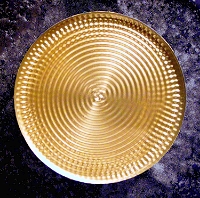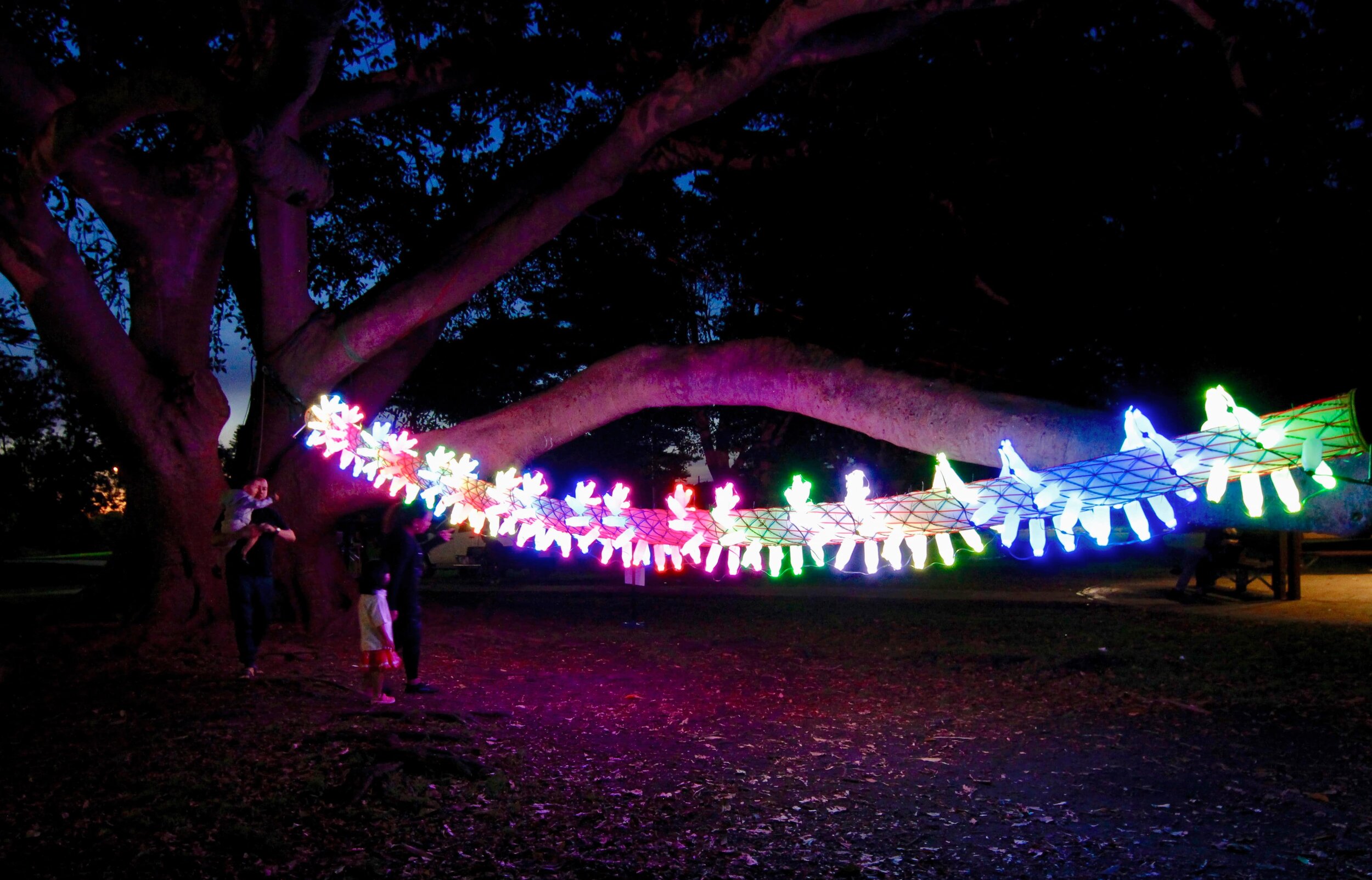


Fibonacci’s Genie
Materials - sailcloth, double braid polyester, cable ties, HDPE bottles, LED lighting, blower, computer systems
Dimensions - 10m x 62cm x 62cm 2020
Fibonacci’s Genie is a geometrically accurate portrait of DNA - organised with the Fibonacci numbers - 3 billion times larger than life. It represents 10 turns of the molecule, which means there are 100 base pairs or “rungs” of the DNA ladder. By using pairs of programmable LED lanterns as the base pairs, genomic data from any life form can be represented on the sculpture as a lighting sequence of 20 colours of 3 lights, that correspond to the 20 amino acids that are translated by the codons of DNA. As these colours scroll down the length of Fibonacci’s Genie, they trigger a soundscape that plays in sync that is a sonification of that same genome - a genomic composition in colour and music
In the first public showings of this work, Fibonacci’s Genie is playing the genomic sequence of Rubisco. This is the section of DNA, or genetic code, that all plants use to capture carbon from CO2, releasing the oxygen. It is the primary way that carbon enters the biosphere, the most abundant section of DNA on the planet, and the best tool we have to combat the climate catastophe that we are currently facing.
The form of DNA is ordered by the Fibonacci numbers/Golden Ratio. Ratios such as the width of the molecule to a full turn of it, the ratio of DNA’s major groove to the minor groove, and the fact that there are exactly 10 steps or “rungs” of DNA per full turn (which gives it the cross-section of a decagon, whose side length to radius is the definition of the Golden Ratio).
The shape of DNA echos the spirals we see in nature at our scale, just billions of times smaller. It is so small, that it is thinner than a wavelength of visible light. It is literally “unseeable”.
The above soundscape is a musical transcription by Stephen Grant of the full genetic code of RuBisCo, the enzyme that plants use to convert CO2 into carbon for themselves, and oxygen for everyone else. This is a first draft of this as a sonic idea - it uses the full genome of 1428 letters, and is based on a regular tempo of 10 letters of code per second.
Rubisco 3.5.8 - stainless steel, mild steel - 200cm x 80cm x 50 cm
Rubisco 3.5.8
Materials - stainless steel, mild steel
Dimensions - 200cm x 80cm x 50cm 2020
This is a portrait of a nucleosome, the first of many folds that DNA does as it packs itself into the nucleus of each living cell. Made up of 3 distinct groups of 3mm stainless steel rod - 3 of them in the outer, 5 in the middle and 8 at the centre. The form of DNA can be “spelt out” with Fibonacci numbers, and it’s geometry references the Golden Ratio in too many ways to mention. This portrait is a scientifically accurate depiction of the geometry of DNA that exists in the unseeable nanoworld that is at the heart of all life as we know it.
Using two shapes made from two different metals to create the 4 bases that code all DNA, Rubisco 3.5.8 is coded with the first 200 “letters” of the Rubisco enzyme. This enzyme is the most abundant piece of DNA on the planet. It’s the enzyme that plants use to strip the carbon from carbon dioxide for their own use, releasing oxygen in the process. Rubisco is the invisible “Climate Change Super Hero”, and like all DNA, it is defined in space by the Golden Ratio ( the ratio of 1: ( √5 + 1 ) / 2 - or 1:1.681033988749895……. ).
Rubisco 3.5.8 - 2020 - stainless steel, mild steel - 200cm x 80cm x 50 cm
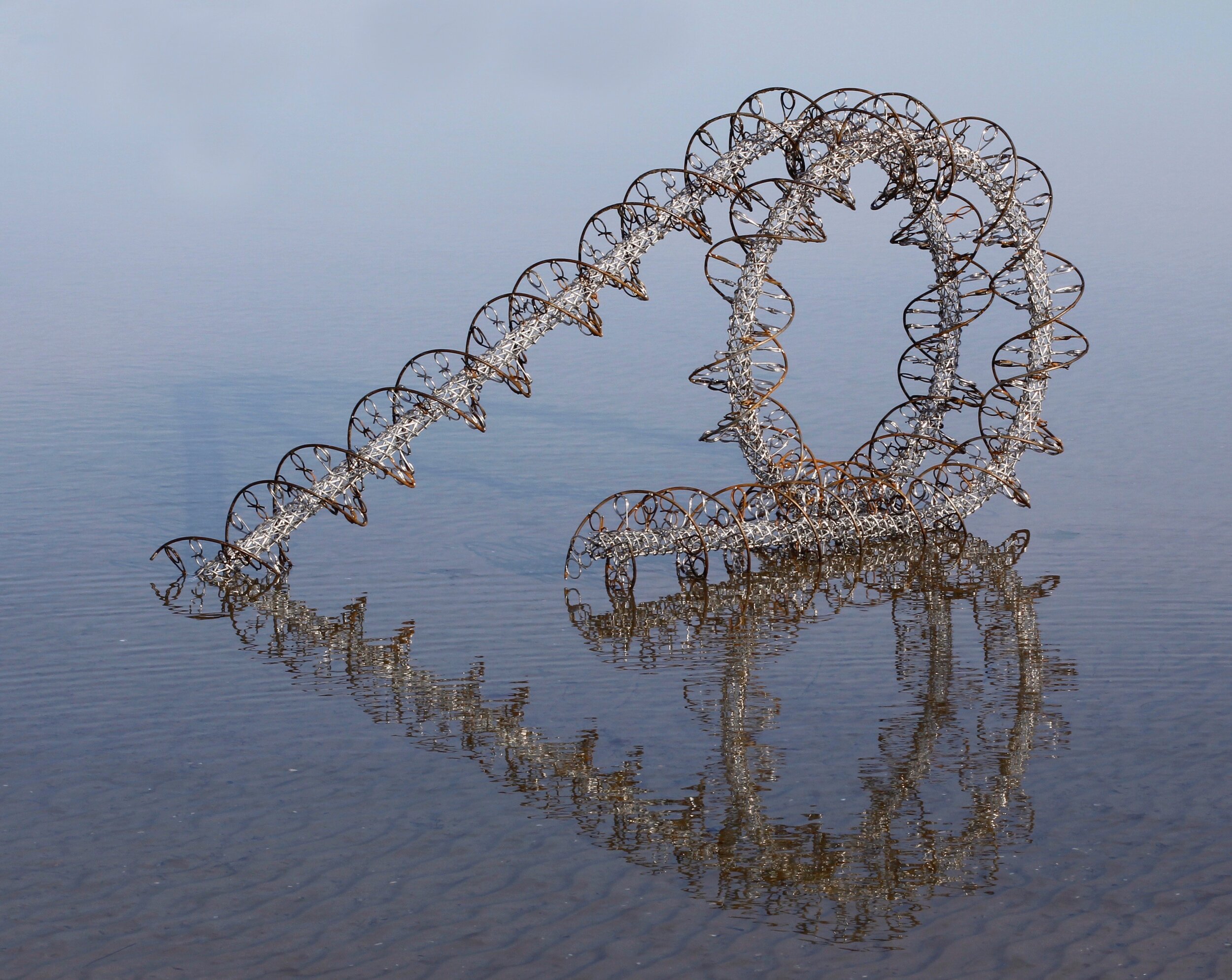
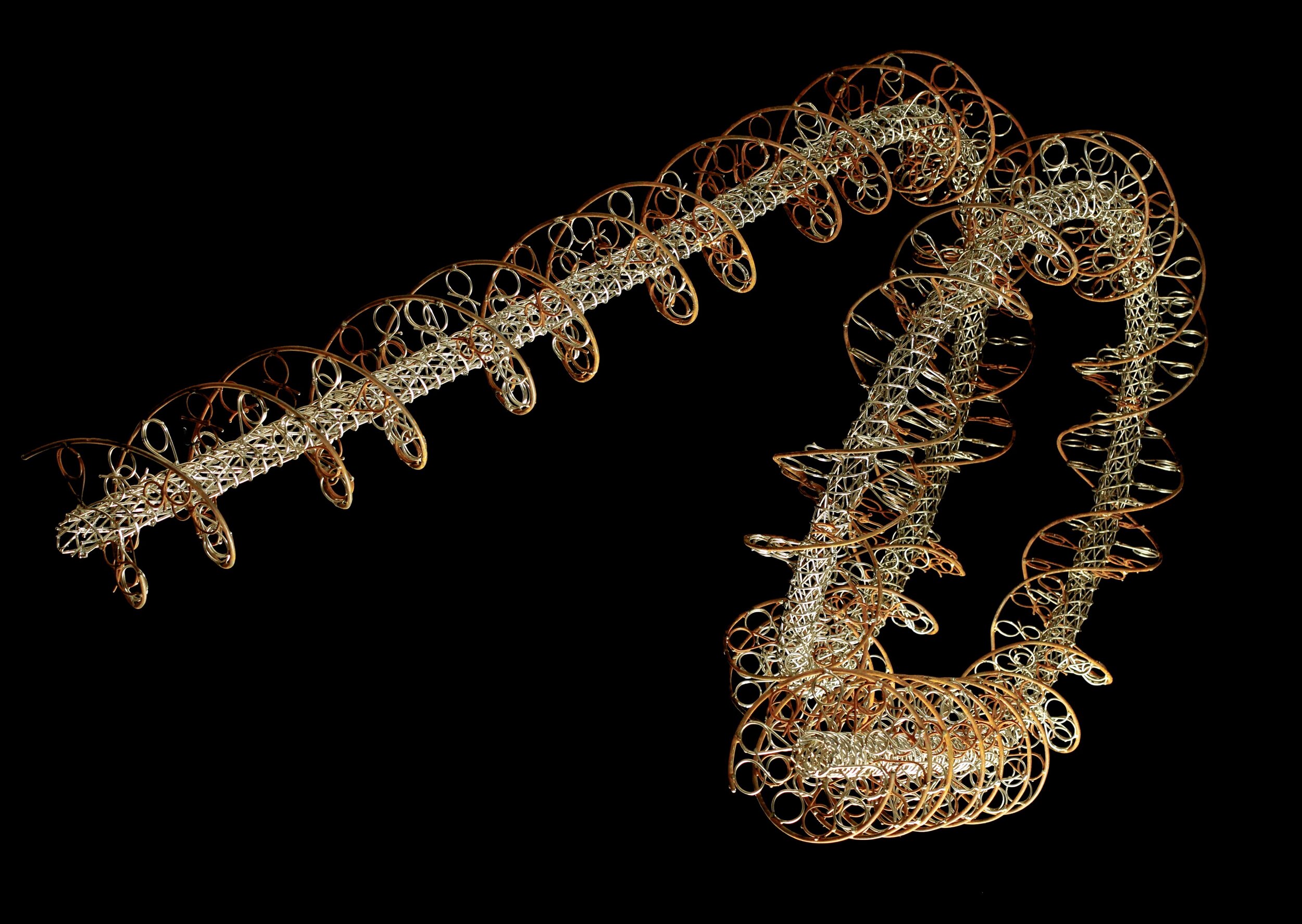

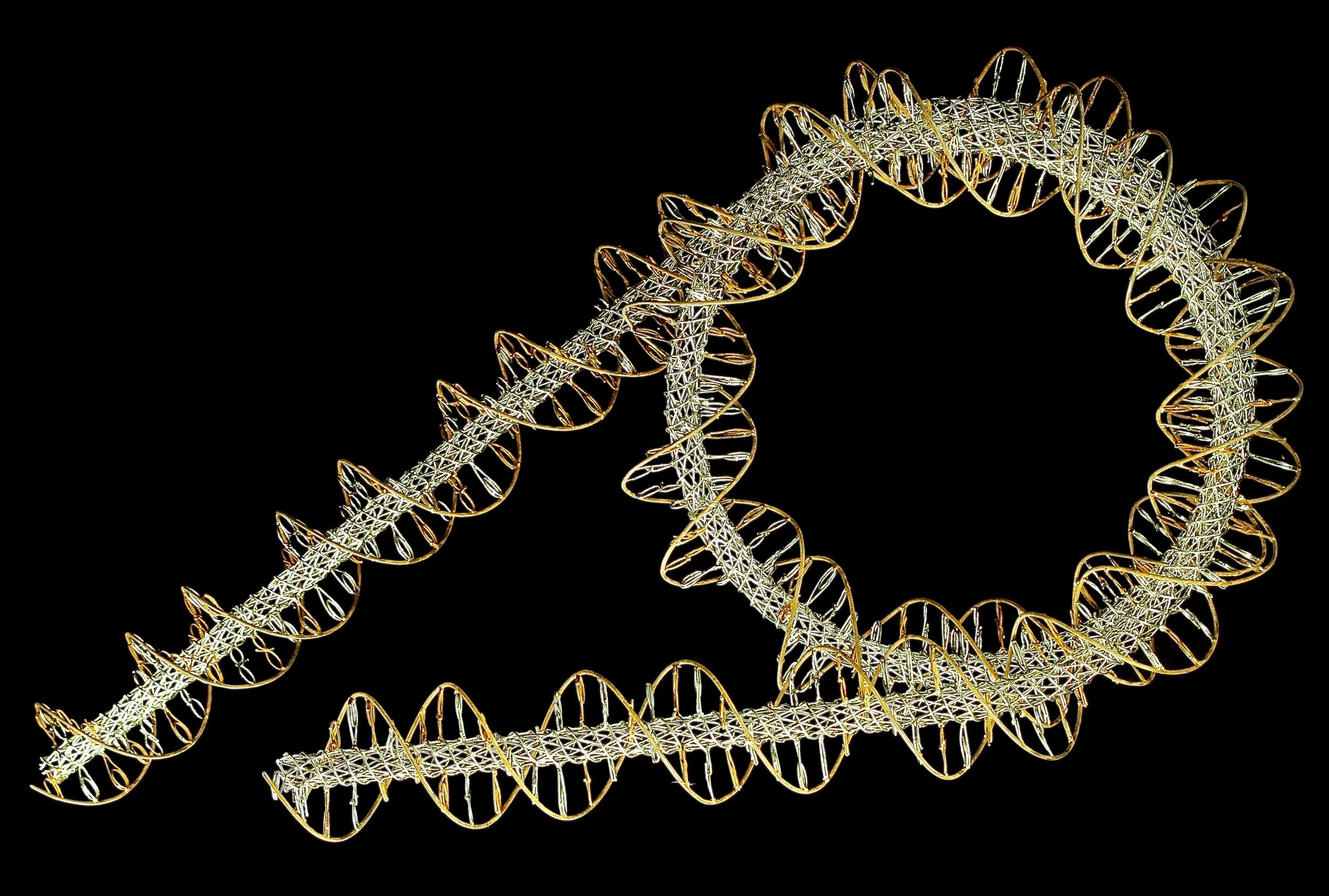
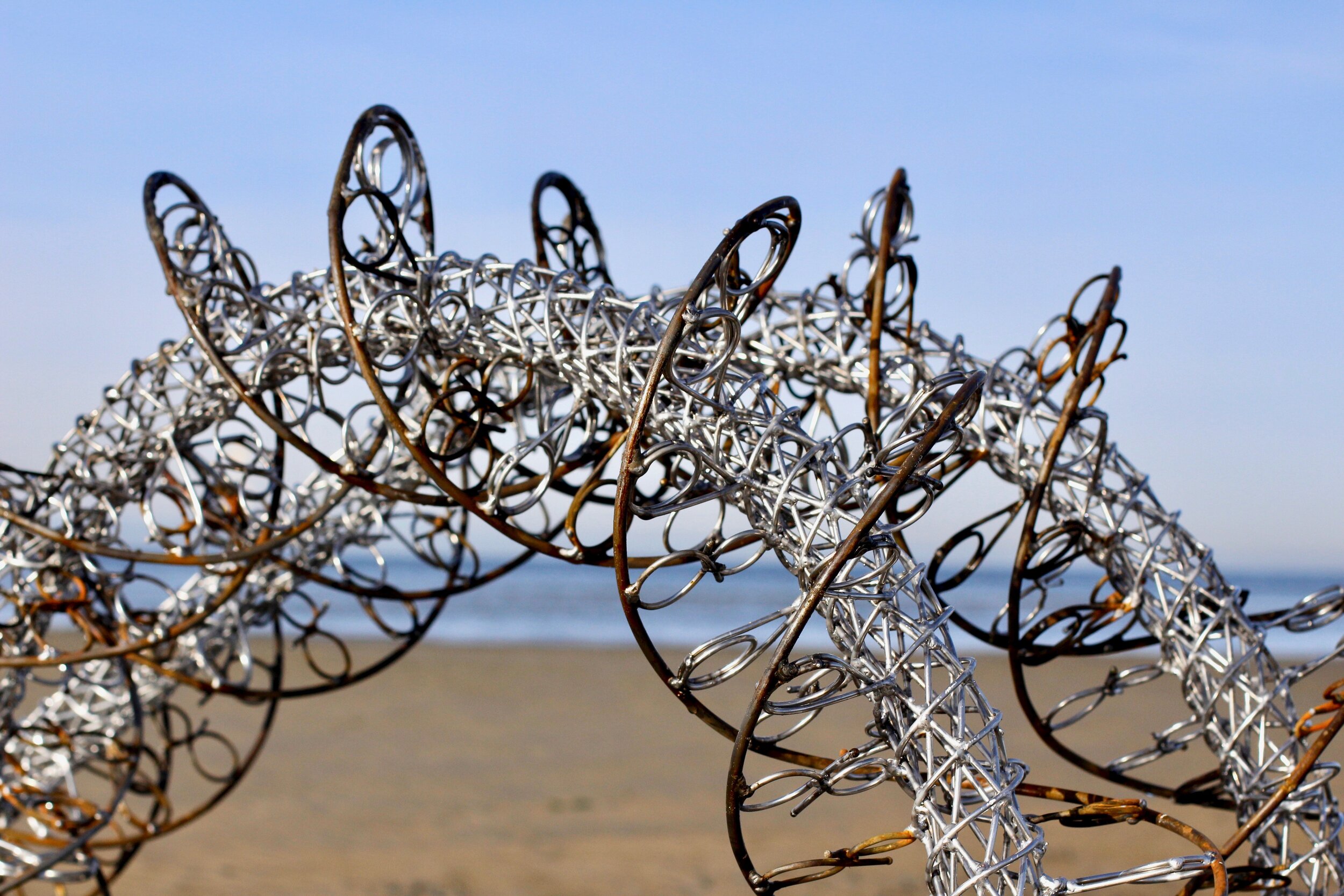
Rubisco 3.5.8 (work in progress) - 2020 - stainless steel, mild steel - 200 cm x 80 cm x 50 cm
Rubisco 3.5.8 (work in progress) - 2020
The Concept of Water
I will never be able to look at a group of water molecules, aligned just before freezing. But if I could, this is what they might look like. I have spent a lot of time imagining the worlds within that I am not privy to. Worlds that would be beautiful to see, and truly mind blowing to visit.
Concept of Water #8
2014 - Bronze - 15cm x 14cm x 7cm
